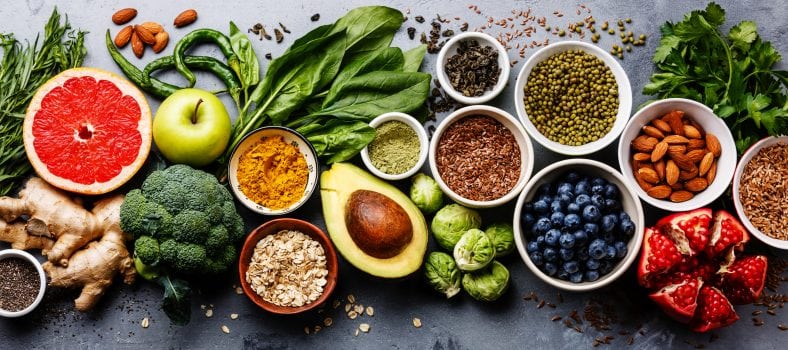
"I'd love to eat low-carb but I don't think I can afford it!" Have you thought this before? I know I have heard it before.
The benefits of a low carb diet are clear, but many people are put off because they think that a low carb diet has to be expensive. The truth is, eating low carb doesn't have to break the bank. You don't need to buy expensive foods or ingredients! In fact, you can eat delicious, healthy, and inexpensive meals every day. Read on to learn more about how to eat low carb without blowing your budget.
Plan For Success
The most important part of eating low carb on a budget is the planning. Having a clear plan every week saves tons of time and effort. Start by browsing the weekly sale ad from your local grocery store to see what's on sale. From there, you can sketch out a meal plan for the week, based around those nutritious and tasty ingredients. You should be able to easily plan how much it will be for daily breakfast, lunch and dinner (or if you practice intermittent fasting, that's even easier!). Always plan to have a few extra snacks on hand, as this can help stop you from splurging on expensive, last minute treats.
If you have more than one local grocery store, compare prices. It may be worth the extra few miles of driving if you can save some serious money on food. If one store has free-range eggs on sale and the other has a sale on chicken, don't hesitate to stop for both.
One of the most helpful things you can do is put a few hours aside each week (maybe on the weekend) to map out your plan. During this time you can:
-
Plan out your grocery shopping. After looking at your local store's weekly ad, write out a detailed list of everything you need to buy. Armed with a list, you'll be less likely to splurge once you get to the store.
-
Map out your meals for the week. Know what you'll be having for dinner each night of the week. Plan quick and easy meals for your busiest nights, and be sure that you know what you'll be packing for lunch during the weekdays.
- Prep foods you know you'll be using. You can pre-chop veggies, cook meat, and make soups or stews ahead of time. Keep pre-portioned meals in the fridge, so when you're hungry you already have a delicious low-carb meal on hand. Portion out snacks like nuts into containers or bags so you know you won't overindulge, and you'll always have something to grab when hunger strikes. When all your food is ready and on hand, you won't have any excuse to grab expensive takeout.
Strategize Your Shopping
When you head to the grocery store, make sure you optimize your time and money. There are a few tricks to keep in mind to really stretch your grocery budget. First, make sure you head to the store with a list and don't stray from it. If you see something that you use a lot of on sale for a good deal, stock up and freeze it for later use.
On a low-carb diet, you most likely don't even need to venture into the aisles of the store – you can just stick to the perimeter. That's where the most healthy, least processed foods are waiting. Fruits, veggies, meat, cheese, eggs and other staples are easily accessible, and you won't be tempting yourself with expensive, processed foods.
Protein is Key
On a low-carb diet, your protein sources can be one of the more expensive items at the grocery store, but if you strategize your meat buying, you'll find that buying meat won't necessarily force you to go over budget.
Often, it's cheaper to buy a whole chicken and portion it out yourself, instead of buying just chicken breasts, thighs, or legs. If you portion out a chicken by hand, you can also save the bones to make nourishing bone broth later.
Also, try cuts of meat that you haven't necessarily considered before. For example, organ meat is much cheaper (and denser in nutrients) than muscle meat, but so many people are afraid to try it. Liver, onions, and bacon is a fantastic, healthy, and surprisingly tasty meal, and buying cow liver is much cheaper than buying steak.
Produce Power

Fresh produce is an important staple in any healthy diet, and while some vegetables and fruits are high in carbs, sticking to lower carb avove the ground veggies will deliver nutrients that can help your body thrive. Look for seasonal veggies instead of buying expensive ones when they're out of season, and don't be afraid to go for frozen vegetables as well. They're just as healthy as their fresh counterpart, and you can be sure that you'll always have healthy veggies on hand in the freezer.
Also, keep in mind that convenience comes at a cost. Many stores have pre-cut veggies available, which makes dishes like stir-fry quick and easy, however, you pay for the prep work. If you set aside prep time every week, you won't need to spend the extra money on pre-shredded cabbage or pre-chopped broccoli.
Buying Smart
Sticking to a budget can be hard, but always buy the best quality that you can afford. Sure, free range chicken, grass fed beef, wild fish and organic produce is higher quality, but it can also be much more expensive, depending on where you shop. But you can always be sure that eating healthy, fresh food, even if it isn't organic, is much better for your body than pizza, soda, fast food, or other processed junk. So don't feel bad about buying the store brand canned salmon instead of the fresh fillets. Splurge on the good stuff when you can, and make the best possible choices when your budget is tight.
Another important thing to remember is to keep it as simple as you can. You don't need fancy cheese or expensive nuts to satisfy you. Grocery stores will upcharge trendy foods like kale because they know it will sell. Turnip greens, spinach, swiss chard, or collard greens are just as healthy, but can usually be found for much cheaper. A simple salad packed with superfoods makes a great meal and can be put together with affordable ingredients. Get familiar with all the different produce options, and how to cook them to make healthy and delicious side dishes. Be adventurous!
Cooking healthy, delicious low carb meals for yourself and your family can be rewarding, and you'll add an impressive set of recipes to your repertoire. Herbs and spices don't add carbs to your meals and they can bring simple dishes to a whole new level. Buy herbs and spices in bulk, and they'll last you for months.
Final Thoughts
Maybe you've tried a low carb diet in the past without much success, or you got discouraged about how much you were spending. But the truth is, low carb is a healthy choice, and healthy choices are for everyone, not just the wealthy. If you spend some time planning out your meals weekly and get to know all the secrets of your grocery store, you'll find that eating low carb is easier and cheaper than you ever expected. It just takes a bit of strategy, and some creativity to kickstart your low carb lifestyle.



I would defientely go with chicken as its cheap and very healthy and low carb and then my next option would be greens like spinach.
Be careful about overdoing cruciferous vegetables if you have the slightest problem with your thyroid. Low-carb “budget” guides use vegetables such as cauliflower, broccoli, cabbage, kale, rutabaga, kohlrabi, collards, turnips, and other cabbage-family vegetables to a wretched excess. Even a person with a healthy thyroid can’t eat cabbage at every meal, folks.
Instead, look for recipes that use thyroid-friendly vegetables like green beans (both the little French ones and the large flat ones), celery (braised in a little chicken broth and butter, try it), leeks, courgettes (zucchini), aubergine (eggplant), mushrooms… you know, all of the things you mix with cabbage vegetables to try to create variation in the diet 🙂
Just one last word… can we be honest with each other, folks? No, no, cauliflower does not resemble rice, pizza crust, potatoes, pasta, noodles, bread, porridge, or any other carb for which it is substituted in desperation mostly because it is white. I know it and you know it. I like cauliflower just fine. As a treat, try it deep fried until light brown. It is nothing like fried potatoes except for the method of preparation, but it is much tastier. Have it with a sprinkle of lemon juice, or lemon juice mixed into a little tahini if you are able to have it.